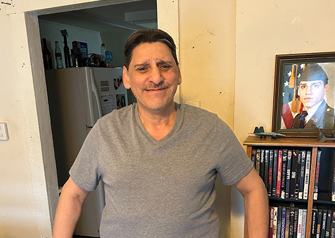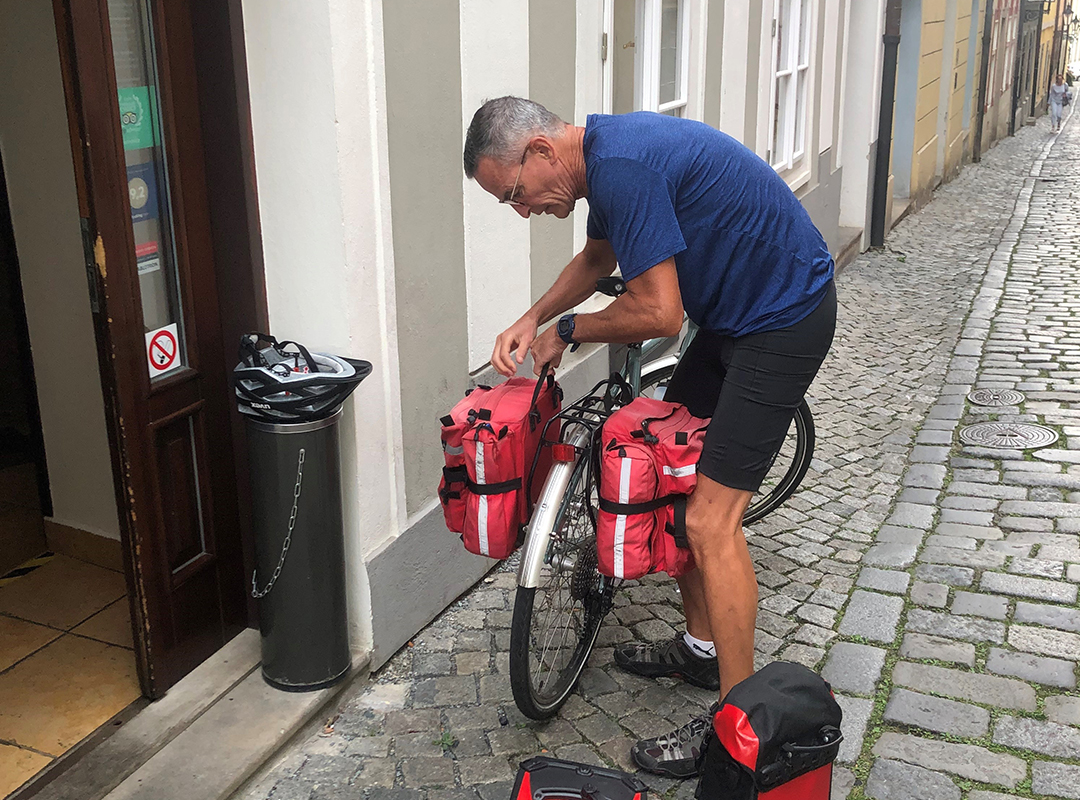
Patient Stories
Reverse Total Shoulder Replacement Returns Patient’s Function and Strength
Date posted: 3/2/2023
Last updated: 3/3/2023
When Carmen Contreras III, 60, of Chicago, tripped and fell on his shoulder, he knew he had suffered an injury, but didn’t realize the extensive damage a simple fall could cause.
“I knew right away it was bad, but I didn’t know how bad,” Contreras explains.
After a visit to the emergency department, an MRI showed that Contreras had sustained a traumatic fracture dislocation of his shoulder joint.
“I couldn’t believe it,” Contreras says. “I was just shutting a gate and fell off the sidewalk's edge. This incident was much worse than when I fell off a three-story ladder!”
After stabilizing Contreras, he was recommended to be treated by Dr. Jourdan Cancienne, a shoulder and sports medicine surgeon at Midwest Orthopedics at Rush, the top-ranked orthopedic group in the Midwest. He saw Dr. Cancienne right away in Joliet and following an exam, Dr. Cancienne recommended a reverse total shoulder replacement to best restore function and range of motion to Contreras’ shoulder.
“This was a challenging situation where you have a young, active individual with a devastating shoulder injury,” Dr. Cancienne explains.
What is a reverse shoulder replacement?
In a healthy shoulder joint, the ‘ball’ of the joint, naturally located at the top of the arm bone, fits securely into the ‘socket’ of the joint at the end of the shoulder. In a reverse total shoulder replacement, a surgeon replaces the joint but instead, the ‘ball’ is attached to the shoulder and the ‘socket’ is attached to the arm bone. The reason this procedure is used is to better achieve stability and range of motion when there is severe damage to the ball.
Reverse shoulder arthroplasty has emerged as a reliable and safe procedure for individuals with shoulder injuries that compromise the bony structure of the ball or socket.
Recovery
Contreras agreed with the treatment plan and successfully underwent the outpatient procedure. After a short rest period and two months of physical therapy, he achieved a near-symmetric range of motion to his non-injured side with excellent strength and function. He has just a small 3-4” scar on his shoulder.
Today, Contreras can do everything he could before his fall, except perhaps comb his hair in the back. He relies on his wife Theresa for help with that.
“Dr. Jourdan is the best and I can’t say enough about how great he was,” says Contreras. “I feel so fortunate to have been under his care.”


